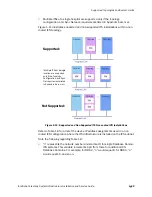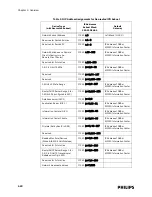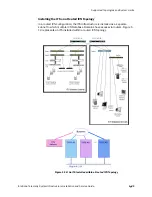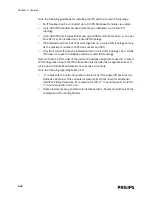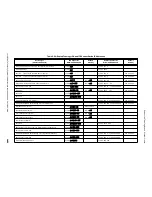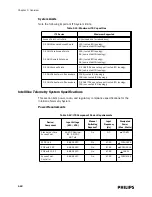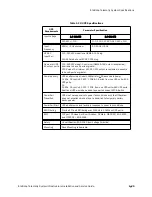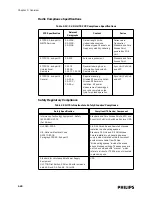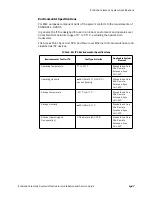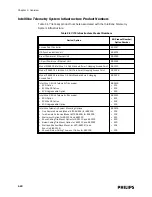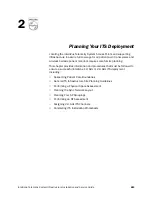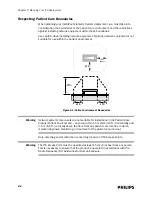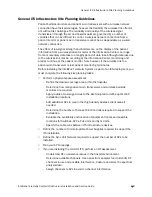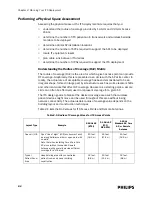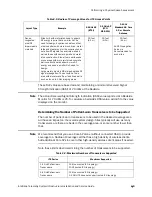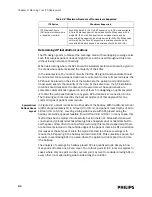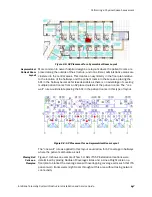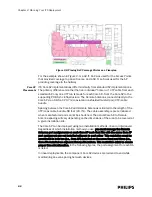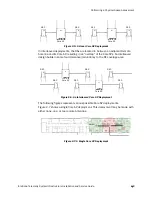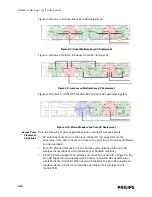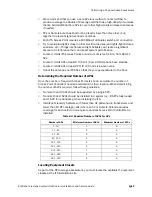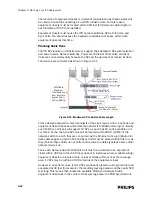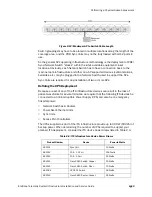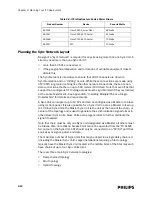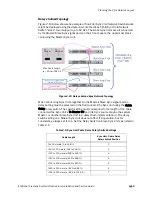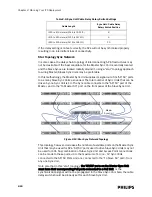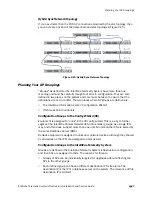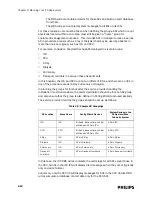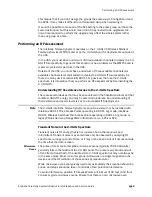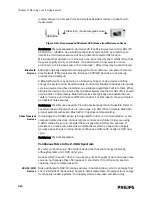
Performing a Physical Space Assessment
IntelliVue Telemetry System Infrastructure Installation and Service Guide
2
-
5
These RoC values are based around maintaining a minimum Received Signal
Strength Indication (RSSI) of -70 dBm at the Bedside.
Note
The actual Received Signal Strength Indication (RSSI) value reported at a Bedside
Monitor for -70 dBm is 25. To calculate a bedside’s RSSI value, add -95 to the value
displayed on the monitor.
Determining the Number of Patient-worn Transceivers to be Supported
The number of patient-worn transceivers to be used in the desired coverage area
will have an impact on the overall system design. Sites typically will use as many
transceivers are there are beds in the coverage area, or some number fewer than
that.
Note
We recommend that you use a Core AP alone (without connected RAs) to provide
coverage to a Radius-of-Coverage cell that has a high density of wireless clients.
Add additional Core APs to cover other high-density wireless client areas if needed.
Note these limits when determining the number of transceivers to be supported.
Dense,
congested
area/RF
impermeable
materials
Sites built with materials known to absorb
RF energy require that a smaller RoC be
used for design. Experience has found that
older hospitals with more block, brick, metal
lathe and plaster and/or tile construction do
not allow RF signals to penetrate walls as
well as those with newer drywall and metal
stud construction. Also, sites in earthquake
prone areas with more reinforced concrete
wall construction also absorb more RF
energy and need a smaller RoC used for
design.
Large metal objects (LMOs) also degrade RF
signal propagation. These could be in an
area with elevator shafts or lead lined walls
such as found in X-Ray imaging areas.
30 feet
(9.1 m)
30 feet
(9.1 m)
30 feet
(9.1 m)
An RF Propagation
Survey is
Recommended for
such sites.
Table 2-1: Radius of Coverage Values for ITS Access Points
Layout Type
Example
2.4 GHz AP
(ETSI)
2.4 GHz AP
(FCC/
RSS-210)
1.4 GHz
Standard AP, Core
AP, or Remote
Antenna
Table 2-2: Maximum Numbers of Transceivers Supported
ITS Device
Maximum Supported
1.4 GHz Patient-worn
Transceivers
128 (non-routed ICN topology)
1024 (routed ICN topology)
2.4 GHz Patient-worn
Transceivers
128 (non-routed ICN topology)
2.4 GHz ITS does not support routed ICN topology.
Summary of Contents for IntelliVue Telemetry System Infrastructure
Page 8: ...viii Contents ...
Page 14: ...xiv About This Guide ...
Page 100: ...3 22 Chapter 3 Installing and Configuring the ITS Figure 3 10 APC Filter Configuration Screen ...
Page 162: ...5 12 Chapter 5 Troubleshooting and Testing ...
Page 168: ...A 6 Chapter A Installing Multiple ITSs at a Single Hospital Site ...
Page 180: ...Index 8 Index ...

